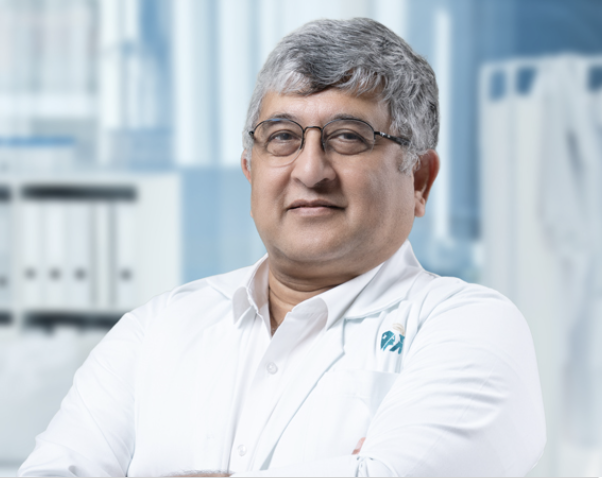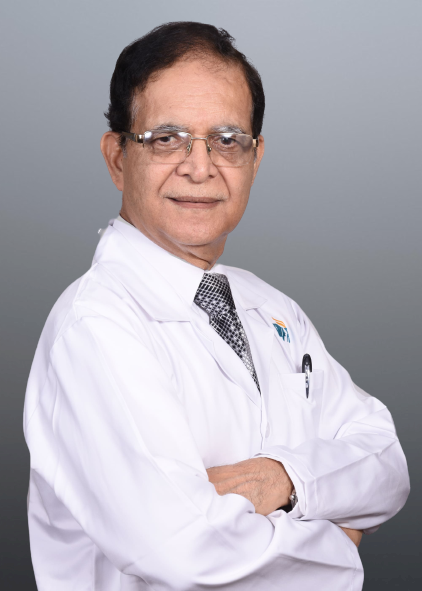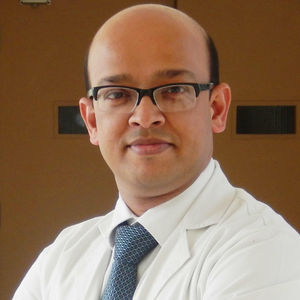Could not find what you are looking for?
- Treatments & Procedures
- Lung Transplant - Types, Procedure, Cost In India, Risks, Recovery and Benefits
Lung Transplant - Types, Procedure, Cost in India, Risks, Recovery and Benefits

Best Hospital for Lung Transplant in India - Apollo Hospitals
What is Lung Transplant?
A lung transplant is a surgical procedure that involves replacing a diseased or damaged lung with a healthy lung from a donor. This complex operation is typically performed on patients suffering from severe lung conditions that cannot be managed through other treatments. The primary purpose of a lung transplant is to improve the quality of life and extend the lifespan of individuals with end-stage lung disease.
Lung transplants are often considered for patients with conditions such as chronic obstructive pulmonary disease (COPD), pulmonary fibrosis, cystic fibrosis, and pulmonary hypertension. These diseases can severely impair lung function, leading to debilitating symptoms such as shortness of breath, chronic cough, and reduced exercise tolerance. In many cases, patients may find that their symptoms significantly limit their daily activities and overall quality of life.
The lung transplant procedure itself involves several critical steps. First, the patient is evaluated to determine their eligibility for the transplant. This evaluation includes a thorough medical history, physical examination, and various tests to assess lung function and overall health. If the patient is deemed a suitable candidate, they are placed on a waiting list for a donor lung.
Once a compatible donor lung becomes available, the patient is admitted to the hospital for the transplant surgery. During the procedure, the surgeon removes the diseased lung and replaces it with the donor lung. The surgery typically lasts several hours and requires the patient to be under general anesthesia. After the transplant, the patient will be closely monitored in the intensive care unit (ICU) for several days to ensure proper recovery and function of the new lung.
Why is Lung Transplant Done?
Lung transplants are performed when other treatment options have failed to provide adequate relief from symptoms or when lung function has deteriorated to a critical level. Patients may experience a range of symptoms that lead to the recommendation for a lung transplant. These symptoms can include:
- Severe shortness of breath, even at rest
- Chronic cough that does not improve with medication
- Frequent respiratory infections
- Fatigue and weakness
- Difficulty performing daily activities, such as walking or climbing stairs
The decision to proceed with a lung transplant is typically made when a patient's lung function falls below a certain threshold, often measured by a test called forced expiratory volume (FEV1). This test assesses how much air a person can forcibly exhale in one second. A significantly reduced FEV1 indicates that the lungs are not functioning adequately, and a transplant may be necessary.
In addition to lung function, other factors are considered when determining the need for a lung transplant. These include the patient's overall health, the presence of other medical conditions, and their ability to adhere to post-transplant care, which is crucial for the success of the procedure.
Indications for Lung Transplant
Not every patient with lung disease is a candidate for a lung transplant. Several clinical situations and test findings help determine whether a patient qualifies for this life-saving procedure. The following are some key indications for lung transplant:
- End-Stage Lung Disease: Patients with end-stage lung diseases, such as COPD, pulmonary fibrosis, or cystic fibrosis, are often considered for a lung transplant when their condition has progressed to the point where other treatments are no longer effective.
- Severe Functional Impairment: A significant decline in lung function, typically indicated by an FEV1 of less than 30% of the predicted value, is a strong indicator for lung transplant candidacy. This level of impairment often correlates with severe symptoms and a reduced quality of life.
- Oxygen Dependency: Patients who require supplemental oxygen to maintain adequate oxygen levels in their blood, especially those who are unable to perform daily activities without it, may be candidates for a lung transplant.
- Pulmonary Hypertension: This condition, characterized by high blood pressure in the lungs, can lead to heart failure and is a common indication for lung transplantation, particularly in patients with idiopathic pulmonary arterial hypertension.
- Recurrent Respiratory Infections: Patients with chronic lung diseases who experience frequent and severe respiratory infections that lead to further lung damage may also be considered for a transplant.
- Age and Overall Health: While there is no strict age limit for lung transplantation, candidates are typically between the ages of 18 and 65 and in good physiological health, often with consideration up to 70 or beyond based on individual factors. Additionally, patients must be in good overall health, without significant comorbidities that could complicate the surgery or recovery.
- Psychosocial Factors: A patient's mental and emotional health is also assessed. Candidates must demonstrate the ability to comply with post-transplant care, including taking immunosuppressive medications and attending follow-up appointments.
In summary, the decision to recommend a lung transplant is based on a combination of clinical findings, the severity of lung disease, and the patient's overall health and ability to adhere to post-operative care. Each case is evaluated individually, and a multidisciplinary team of healthcare professionals works together to determine the best course of action for each patient.
Types of Lung Transplant
Lung transplants can be categorized into different types based on the number of lungs transplanted and the source of the donor lung. The two primary types of lung transplants are:
- Single Lung Transplant: This procedure involves the transplantation of one lung from a deceased donor. It is often performed on patients with unilateral lung disease, where one lung is severely affected while the other remains relatively healthy.
- Double Lung Transplant: In this procedure, both lungs are replaced with healthy lungs from a deceased donor. A double lung transplant is typically recommended for patients with bilateral lung disease, such as cystic fibrosis or severe pulmonary fibrosis, where both lungs are significantly compromised.
In some cases, living donor lung transplants may also be considered, although this is less common. In a living donor lung transplant, a portion of a lung from a living donor is transplanted into the recipient. This usually requires two living donors, each donating a lobe, to adequately support the recipient's breathing. This approach is more complex and requires careful matching and evaluation of both the donor and recipient.
Contraindications for Lung Transplant
While lung transplants can be life-saving for many patients with severe lung diseases, certain conditions or factors may make a patient unsuitable for this procedure. Understanding these contraindications is crucial for both patients and healthcare providers.
- Active Infections: Patients with active infections, such as tuberculosis or severe pneumonia, may not be eligible for a lung transplant. The immune suppression required after the transplant can exacerbate these infections.
- Malignancies: A history of certain cancers, particularly those that are not in remission, can disqualify a patient from receiving a lung transplant. This is due to the increased risk of cancer recurrence when the immune system is suppressed.
- Severe Comorbidities: Patients with significant other health issues, such as advanced heart disease, liver disease, or kidney failure, may not be suitable candidates. The stress of surgery and recovery can be too much for individuals with multiple health problems.
- Substance Abuse: Active substance abuse, including smoking, alcohol, or drug use, can disqualify a patient. A commitment to a healthy lifestyle is essential for the success of a lung transplant.
- Non-Adherence to Medical Treatment: Patients who have a history of not following medical advice or treatment plans may be considered unsuitable. Adherence to post-transplant care is critical for the success of the procedure.
- Psychosocial Factors: Mental health issues, lack of social support, or unstable living situations can impact a patient’s ability to cope with the demands of a lung transplant. A stable support system is vital for recovery.
- Age Considerations: While age alone is not a strict contraindication, older patients may face additional risks. Each case is evaluated individually, considering overall health and functional status.
- Obesity: Severe obesity can complicate surgery and recovery. A body mass index (BMI) above a certain threshold may lead to disqualification, as it can increase the risk of complications.
- Poor Lung Function: Patients with very poor lung function who also have other severe health issues that limit their overall prognosis, or who are not expected to benefit significantly from a transplant due to extreme frailty, may not be considered suitable candidates.
- Previous Transplants: Patients who have previously undergone lung transplants may face additional risks and complications, making a second transplant more complex and less likely to succeed.
Understanding these contraindications can help patients and their families have informed discussions with their healthcare teams about the potential for lung transplantation.
How to Prepare for Lung Transplant
Preparing for a lung transplant involves several important steps to ensure the best possible outcome. Here’s what patients can expect in the lead-up to the procedure.
- Comprehensive Evaluation: Before being placed on the transplant list, patients undergo a thorough evaluation. This includes medical history, physical examinations, and various tests to assess lung function and overall health.
- Pre-Transplant Testing: Patients will likely undergo a series of tests, including:
- Pulmonary Function Tests: To measure lung capacity and function.
- Imaging Studies: Such as chest X-rays or CT scans to visualize lung structure.
- Blood Tests: To check for infections, organ function, and blood type compatibility.
- Cardiac Evaluation: To assess heart health, including an echocardiogram or stress test.
Lifestyle Modifications: Patients may be advised to make lifestyle changes, such as quitting smoking, improving diet, and increasing physical activity. These changes can enhance overall health and improve transplant outcomes. - Education and Counseling: Patients should attend educational sessions about the transplant process, including what to expect before, during, and after the surgery. Counseling may also be beneficial to address any emotional or psychological concerns. Connecting with support groups for lung transplant patients and their families can provide invaluable peer support and understanding.
- Support System: Establishing a strong support system is crucial. Patients should identify family members or friends who can assist them during recovery and provide emotional support.
- Financial Considerations: Understanding the costs associated with lung transplantation, including surgery, hospitalization, and post-operative care, is essential. Patients should discuss financial options with their healthcare team and insurance providers.
- Pre-Operative Instructions: As the surgery date approaches, patients will receive specific instructions, which may include:
- Avoiding certain medications, especially blood thinners.
- Fasting before the procedure.
- Arranging transportation to and from the hospital.
- Emergency Contact: Patients should ensure they have a reliable way to be contacted when a donor lung becomes available. This may involve keeping a phone nearby and being ready to go to the hospital at a moment’s notice.
By following these preparation steps, patients can help ensure they are ready for the lung transplant process, increasing the likelihood of a successful outcome.
Lung Transplant: Step-by-Step Procedure
Understanding the lung transplant procedure can help alleviate anxiety and prepare patients for what to expect. Here’s a step-by-step overview of the process.
- Waiting for a Donor Lung: Once a patient is placed on the transplant list, they may wait for a suitable donor lung. The waiting time can vary based on factors such as blood type, size, and urgency of the need.
- Receiving the Call: When a donor lung becomes available, the transplant center will contact the patient. It’s essential to be ready to go to the hospital immediately.
- Pre-Operative Preparation: Upon arrival at the hospital, patients will undergo final evaluations, including blood tests and imaging studies. An intravenous (IV) line will be placed for medications and fluids.
- Anesthesia: Before the surgery begins, patients will receive general anesthesia, ensuring they are unconscious and pain-free during the procedure.
- Surgical Procedure: The surgeon will make an incision in the chest, typically through the breastbone or side of the chest. The damaged lung will be removed, and the donor lung will be carefully placed in the chest cavity. The surgeon will connect the new lung to the airway and blood vessels.
- Monitoring: After the surgery, patients will be moved to the intensive care unit (ICU) for close monitoring. Medical staff will keep a close eye on vital signs and lung function.
- Recovery: Patients will gradually transition from the ICU to a regular hospital room as their condition stabilizes. Recovery can take several days to weeks, during which patients will begin pulmonary rehabilitation to strengthen their lungs and improve breathing.
- Discharge Planning: Once patients are stable and able to manage their care, they will be discharged from the hospital. They will receive detailed instructions on medications, follow-up appointments, and lifestyle changes.
- Long-Term Care: After discharge, patients will need regular follow-up visits to monitor lung function and ensure the body is accepting the new lung. Immunosuppressive medications will be prescribed to prevent rejection of the donor lung. Adherence to these medications is lifelong and crucial for preventing rejection and managing potential long-term side effects.
- Lifestyle Adjustments: Patients will need to make ongoing lifestyle changes, including avoiding infections, maintaining a healthy diet, and adhering to medication regimens. Support groups and counseling can also be beneficial during this adjustment period. Understanding that immunosuppressants can increase risks for other conditions (e.g., diabetes, osteoporosis) and requiring careful monitoring is vital for long-term health.
By understanding the lung transplant procedure, patients can feel more empowered and prepared for their journey toward better lung health.
Risks and Complications of Lung Transplant
Like any major surgery, lung transplants come with risks and potential complications. It’s important for patients to be aware of these to make informed decisions about their health.
- Rejection: The body may recognize the new lung as foreign and attempt to reject it. This is a common risk and is managed with immunosuppressive medications.
- Infection: After a lung transplant, patients are at increased risk for infections due to the immunosuppressive drugs. Common infections include pneumonia and respiratory infections.
- Bleeding: Surgical procedures can lead to bleeding, which may require additional interventions or blood transfusions.
- Clots: There is a risk of blood clots forming in the legs (deep vein thrombosis) or lungs (pulmonary embolism), which can be serious.
- Lung Complications: Issues such as bronchial anastomotic stricture (narrowing of the airway) or primary graft dysfunction (poor function of the new lung) can occur.
- Kidney Damage: Long-term use of immunosuppressive medications can lead to kidney problems, requiring monitoring and management.
- Cancer Risk: Patients who undergo lung transplants have a higher risk of developing certain cancers due to immunosuppression.
- Cardiovascular Issues: There may be an increased risk of heart disease and hypertension after a lung transplant.
- Gastroesophageal Reflux Disease (GERD): Some patients may experience GERD, which can negatively impact the transplanted lung's health and contribute to complications like chronic rejection. It requires careful management.
- Psychological Effects: The emotional impact of undergoing a lung transplant can lead to anxiety, depression, or other mental health issues. Support and counseling are important for coping.
While these risks may sound concerning, it’s essential to remember that many patients experience successful outcomes and improved quality of life after lung transplantation. Regular follow-up care and adherence to medical advice can significantly mitigate these risks.
Recovery After Lung Transplant
The recovery process after a lung transplant is crucial for the success of the procedure and the overall health of the patient. The timeline for recovery can vary significantly from person to person, but there are general stages that most patients can expect.
- Immediate Post-Operative Care - After the lung transplant surgery, patients are typically moved to the Intensive Care Unit (ICU) for close monitoring. This initial phase lasts for about 1 to 3 days. During this time, healthcare providers will monitor vital signs, lung function, and any signs of complications. Patients may be on ventilators temporarily to assist with breathing.
- Hospital Stay - Following the ICU, patients usually spend about 1 to 2 weeks in the hospital. During this period, they will begin physical therapy to regain strength and mobility. The medical team will also start the patient on immunosuppressive medications to prevent organ rejection. Regular assessments will be conducted to monitor lung function and overall recovery.
- Home Recovery - Once discharged, the recovery continues at home. The first few weeks are critical, and patients should expect to take it easy. Most patients can return to light activities within 4 to 6 weeks, but full recovery may take 3 to 6 months. Regular follow-up appointments are essential to monitor lung function and adjust medications as needed.
Lung Transplant Aftercare Tips
- Medication Adherence: It is vital to take immunosuppressive medications as prescribed to prevent rejection.
- Regular Check-ups: Attend all follow-up appointments for lung function tests and overall health assessments.
- Healthy Lifestyle: Adopt a balanced diet, engage in light exercise, and avoid smoking and alcohol.
- Infection Prevention: Practice good hygiene and avoid crowded places to reduce the risk of infections.
- Emotional Support: Seek support from family, friends, or counseling services to cope with the emotional aspects of recovery.
Resuming Normal Activities
Patients can gradually resume normal activities, including work and social engagements, typically within 3 to 6 months post-transplant. However, high-impact sports or activities that pose a risk of injury should be avoided for at least a year. Always consult with healthcare providers before making significant changes to activity levels.
Benefits of Lung Transplant
Lung transplants can significantly improve the quality of life for patients suffering from severe lung diseases. Here are some key benefits:
- Improved Lung Function: A successful lung transplant can restore normal or near-normal lung function, allowing patients to breathe easier and engage in daily activities without the limitations imposed by their previous condition.
- Enhanced Quality of Life: Many patients report a substantial improvement in their overall quality of life post-transplant. They can enjoy activities that were previously difficult or impossible, such as walking, exercising, and spending time with family and friends.
- Increased Life Expectancy: While lung transplants do not guarantee a cure, they can significantly extend life expectancy for patients with end-stage lung disease. Many patients live for several years after the procedure, with some enjoying a good quality of life.
- Reduction in Symptoms: Patients often experience a reduction in symptoms such as shortness of breath, chronic cough, and fatigue, which can greatly enhance their daily functioning and emotional well-being.
- Psychological Benefits: The relief from chronic illness can lead to improved mental health, reducing anxiety and depression associated with severe lung disease.
Lung Transplant vs. Alternative Management Strategies for End-Stage Lung Disease
For individuals suffering from severe, end-stage lung disease, a lung transplant offers the potential for significantly improved quality of life and extended lifespan by replacing diseased lungs with healthy donor lungs. However, not all patients are candidates for transplant, and a range of alternative management strategies are employed to control symptoms, optimize remaining lung function, or provide supportive care. The choice of treatment depends on the specific lung disease, its severity, the patient's overall health, and their personal preferences.
Understanding these different approaches is crucial for patients and their families.
|
Feature |
Lung Transplant |
Medical Management (Pharmacological) |
Pulmonary Rehabilitation & Oxygen Therapy |
Palliative Care (Symptom Management) |
|---|---|---|---|---|
| Incision Size | Large (chest incision) | No incision | No incision | No incision |
| Recovery Time | Longer (weeks in ICU, months for full recovery) | N/A (ongoing management, not a recovery from procedure) | N/A (ongoing program, not a recovery from procedure) | N/A (ongoing support, not a recovery from procedure) |
| Hospital Stay | Typically 1-3 days in ICU, then 1-2 weeks in hospital | Varies (outpatient follow-up, or inpatient for acute exacerbations) | Often outpatient program; no hospital stay for therapy itself | Varies (can be inpatient or outpatient) |
| Pain Level | Significant postoperative pain (managed with strong medication) | No direct pain from treatment (may have side effects from meds) | No direct pain from therapy (may have discomfort from exercise) | Focus on pain and symptom relief (medication-based) |
| Risk of Complications | Rejection, infection (due to immunosuppressants), bleeding, blood clots, organ dysfunction, cancer (long-term immunosuppressant risk), cardiovascular issues, GERD | Side effects from medications (e.g., steroids, bronchodilators, antibiotics) | No major procedure-related risks; potential for injury during exercise if not supervised | No direct procedure-related risks (focus on comfort) |
| Primary Goal | Restore near-normal lung function, extend life | Control symptoms, slow disease progression, manage exacerbations | Improve exercise tolerance, reduce breathlessness, enhance daily function | Improve quality of life, alleviate suffering, provide holistic support |
| Definitive Treatment | Yes, replaces diseased organ | No, manages disease but does not cure | No, supportive therapy | No, supportive care |
| Impact on Lung Function | Restores normal or near-normal lung function | Aims to preserve existing function; cannot reverse severe damage | Optimizes existing lung function; improves efficiency of breathing | Does not directly improve lung function; manages symptoms of declining function |
| Life Expectancy | Significantly extends life expectancy | May extend life, but depends on disease progression | May improve survival in some conditions (e.g., COPD with oxygen) | Focus on comfort and dignity, not life extension |
| Cost | Highest (surgery, lifelong immunosuppressants, extensive follow-up) | Lower (cost of medications, clinic visits) | Moderate (cost of therapy sessions, oxygen equipment) | Varies (can be low for home-based, higher for inpatient hospice) |
What is the Cost of a Lung Transplant in India?
The cost of a lung transplant in India typically ranges from ₹1,00,000 to ₹2,50,000. This price can vary based on several factors:
- Hospital: Different hospitals have varying pricing structures. Renowned institutions like Apollo Hospitals may offer comprehensive care and advanced facilities, which can influence the overall cost.
- Location: The city and region where the transplant is performed can affect costs due to differences in living expenses and healthcare pricing.
- Room Type: The choice of room (general ward, private room, etc.) can significantly impact the total cost.
- Complications: Any complications that arise during or after the surgery can lead to additional expenses.
At Apollo Hospitals, we prioritize transparent communication and personalized care plans. Apollo Hospitals is the best hospital for lung transplant in India because of our trusted expertise, advanced facilities, and commitment to patient outcomes. We encourage prospective patients seeking a lung transplant in India to contact us directly for detailed information on the transplant cost and assistance with financial planning.
With Apollo Hospitals, you get access to trusted expertise, comprehensive aftercare, and excellent value, making us a preferred choice for lung transplant in India.
Frequently Asked Questions about Lung Transplant
- What dietary changes should I make before a Lung Transplant?
Before a Lung Transplant, it is essential to maintain a balanced diet rich in fruits, vegetables, lean proteins, and whole grains. Avoid processed foods, excessive salt, and sugar. Staying hydrated is also crucial. Consult with a nutritionist for personalized advice. - Can I eat normally after a Lung Transplant?
After a Lung Transplant, you can gradually return to a normal diet, but it’s important to focus on nutrient-dense foods. Avoid raw or undercooked foods to reduce infection risk. Regular follow-ups with a dietitian can help tailor your diet to your recovery needs. - How should elderly patients prepare for a Lung Transplant?
Elderly patients considering a Lung Transplant should undergo thorough evaluations to assess their overall health. It’s crucial to manage existing health conditions and follow a healthy lifestyle. Engaging in light physical activity and a balanced diet can improve outcomes. - Is pregnancy safe after a Lung Transplant?
Pregnancy after a Lung Transplant is possible but requires careful planning and medical supervision. It’s essential to discuss your plans with your healthcare team to ensure that both you and the baby remain healthy throughout the pregnancy. - What are the considerations for pediatric patients needing a Lung Transplant?
Pediatric patients undergoing a Lung Transplant require specialized care tailored to their age and development. The evaluation process is similar, but the approach to surgery and post-operative care may differ. Family support is crucial during recovery. - How does obesity affect eligibility for a Lung Transplant?
Obesity can complicate the eligibility for a Lung Transplant. Excess weight can increase surgical risks and affect recovery. Weight loss through diet and exercise is often recommended before considering transplantation. - Can patients with diabetes undergo a Lung Transplant?
Yes, patients with diabetes can undergo a Lung Transplant, but their diabetes must be well-managed. Uncontrolled diabetes can lead to complications during and after surgery, so it’s essential to work closely with healthcare providers to stabilize blood sugar levels. - What if I have hypertension before my Lung Transplant?
Having hypertension does not automatically disqualify you from receiving a Lung Transplant. However, it must be well-controlled prior to surgery. Regular monitoring and medication adjustments may be necessary to ensure optimal health. - How does smoking history impact Lung Transplant candidacy?
A history of smoking can affect eligibility for a Lung Transplant. Patients are usually required to quit smoking for a specified period before being considered for surgery. This helps improve overall lung health and reduces the risk of complications. - What are the risks of Lung Transplant for patients with a history of heart disease?
Patients with a history of heart disease may face additional risks during a Lung Transplant. A thorough cardiovascular evaluation is necessary to assess the heart's health and determine if the patient is a suitable candidate for the procedure. - How long is the recovery period for a Lung Transplant?
The recovery period for a Lung Transplant can vary, but most patients can expect to spend 3 to 6 months recovering fully. Regular follow-ups and adherence to medication regimens are crucial during this time. - What lifestyle changes should I make after a Lung Transplant?
After a Lung Transplant, it’s important to adopt a healthy lifestyle, including a balanced diet, regular exercise, and avoiding smoking and alcohol. Staying vigilant about infections and attending follow-up appointments is also essential. - Can I travel after a Lung Transplant?
Traveling after a Lung Transplant is possible, but it requires careful planning. Consult with your healthcare team before making travel arrangements, and ensure you have access to medical care at your destination. - What are the signs of organ rejection after a Lung Transplant?
Signs of organ rejection can include shortness of breath, decreased lung function, fever, and fatigue. It’s crucial to report any unusual symptoms to your healthcare provider immediately for prompt evaluation. - How often will I need to see my doctor after a Lung Transplant?
After a Lung Transplant, patients typically have frequent follow-up appointments in the first year, often every few weeks. As time goes on and if recovery is stable, these visits may become less frequent. - What is the role of immunosuppressive medications after a Lung Transplant?
Immunosuppressive medications are critical after a Lung Transplant to prevent the body from rejecting the new lung. Patients must take these medications as prescribed and attend regular check-ups to monitor their effects. - Can I participate in sports after a Lung Transplant?
Participation in sports after a Lung Transplant is possible, but it should be approached cautiously. Low-impact activities are generally recommended initially, with a gradual increase in intensity as advised by your healthcare team. - What should I do if I experience side effects from my medications?
If you experience side effects from your medications after a Lung Transplant, contact your healthcare provider immediately. They may adjust your dosage or switch you to a different medication to manage the side effects effectively. - How does the quality of Lung Transplant care in India compare to other countries?
The quality of Lung Transplant care in India is on par with many Western countries, with experienced medical teams and advanced facilities. Additionally, the cost of the procedure is significantly lower in India, making it an attractive option for many patients. - What support resources are available for Lung Transplant patients?
Lung Transplant patients can access various support resources, including counseling services, support groups, and educational materials. Hospitals like Apollo offer comprehensive support to help patients navigate their recovery journey. - What is the success rate of lung transplant surgery?
The success rate of lung transplant surgery depends on factors like the patient’s health, age, and the cause of lung failure. On average, the 1-year survival rate is around 85–90%, and the 5-year survival rate is about 50–60%. Adherence to follow-up care and medications plays a major role in long-term success. - What is the typical survival rate after a Lung Transplant?
Survival rates after a lung transplant vary by patient and condition. Most patients live at least 5 years post-surgery, with some living more than 10 years. Continuous medical follow-up, a healthy lifestyle, and effective infection control can significantly improve survival chances. - Is there an age limit for lung transplant eligibility?
There is no strict age limit, but most transplant centers consider candidates up to 65–70 years old. However, biological age and overall health condition are more important than chronological age. Each case is evaluated individually to ensure the best possible outcome.
Conclusion
Lung Transplantation is a life-changing procedure that can significantly improve the quality of life for patients with severe lung diseases. Understanding the recovery process, benefits, and potential costs is essential for anyone considering this option. If you or a loved one is exploring the possibility of a Lung Transplant, it is crucial to speak with a medical professional who can provide personalized guidance and support.













